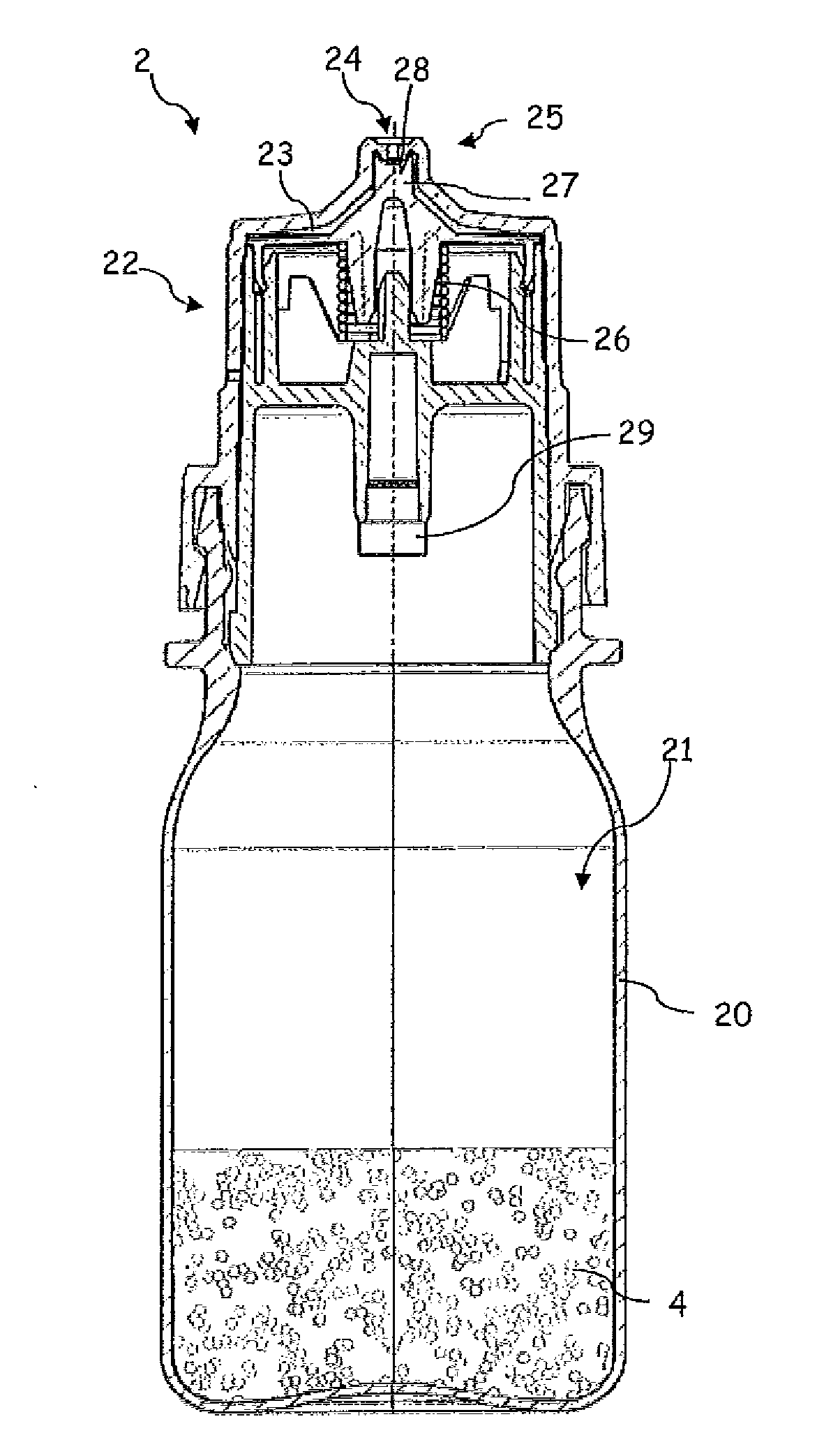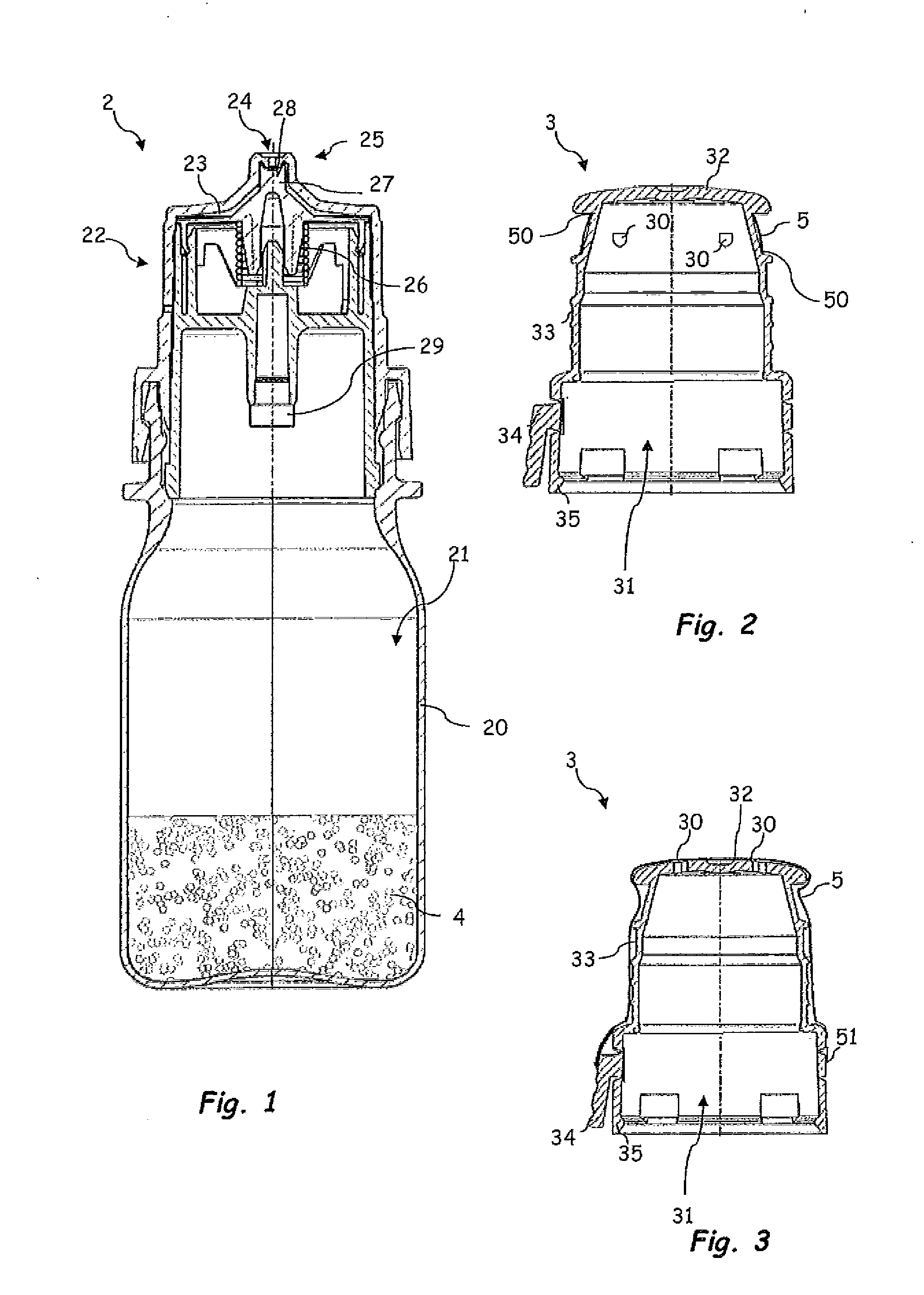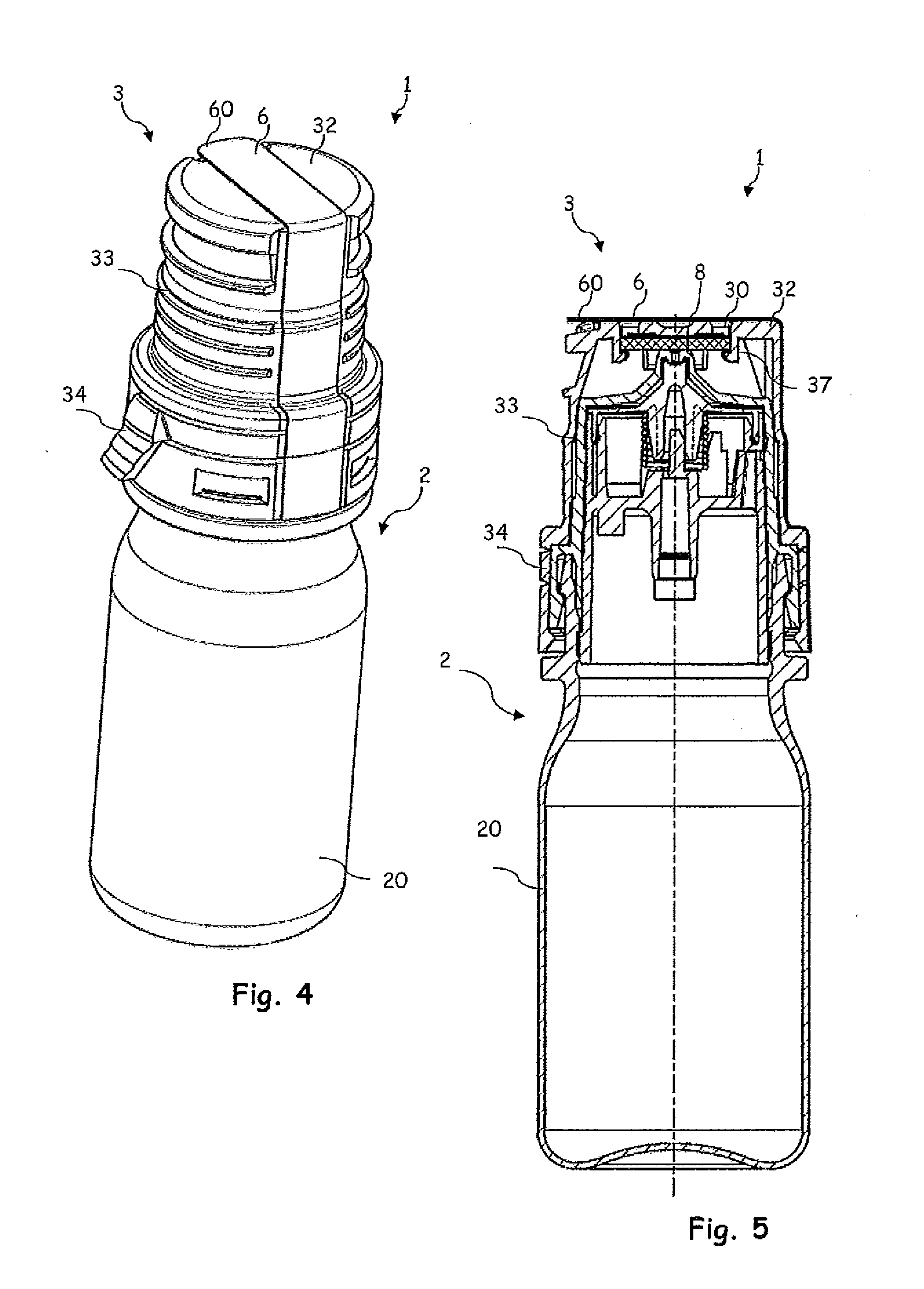Protective cap for a dispenser and dispenser for discharging pharmaceutical and/or cosmetic liquids
a technology for protecting caps and dispensers, applied in the direction of caps, liquid handling, applications, etc., can solve the problems of inability to discharge channels, etc., and achieve the effect of facilitating user handling and efficiently filtering ou
- Summary
- Abstract
- Description
- Claims
- Application Information
AI Technical Summary
Benefits of technology
Problems solved by technology
Method used
Image
Examples
Embodiment Construction
[0034]FIG. 1 shows, in the first instance, a dispenser 2 which is intended for discharging pharmaceutical and / or cosmetic liquids and is suitable, in particular, for unpreserved ophthalmic preparations.
[0035]Said dispenser 2 has a liquid reservoir 21, which is delimited by a container body 20. The liquid 4 is stored in the liquid reservoir 21. An outlet subassembly 22 has been placed in position, and fastened by means of a latching connection, on the container body 20. Said outlet subassembly 22 serves for directing liquid from the liquid reservoir 21 to an exit opening 24 through an outlet channel 23. The exit opening 24 illustrated is configured in the form of a droplet-forming surface and widens conically in the discharging direction.
[0036]On account of the section plane in FIG. 1, the latter illustrates merely a final part of the outlet channel 23. The outlet channel 23 has arranged in it an outlet valve 25 which, in a closed state, closes the outlet channel 23, and therefore li...
PUM
| Property | Measurement | Unit |
|---|---|---|
| pore diameter | aaaaa | aaaaa |
| pore diameter | aaaaa | aaaaa |
| pore diameter | aaaaa | aaaaa |
Abstract
Description
Claims
Application Information
 Login to View More
Login to View More - R&D
- Intellectual Property
- Life Sciences
- Materials
- Tech Scout
- Unparalleled Data Quality
- Higher Quality Content
- 60% Fewer Hallucinations
Browse by: Latest US Patents, China's latest patents, Technical Efficacy Thesaurus, Application Domain, Technology Topic, Popular Technical Reports.
© 2025 PatSnap. All rights reserved.Legal|Privacy policy|Modern Slavery Act Transparency Statement|Sitemap|About US| Contact US: help@patsnap.com



